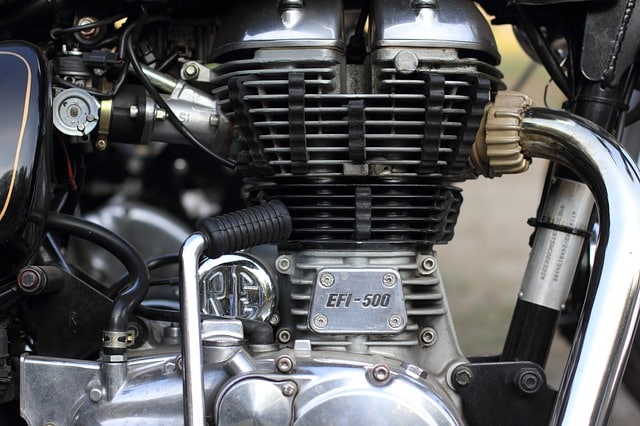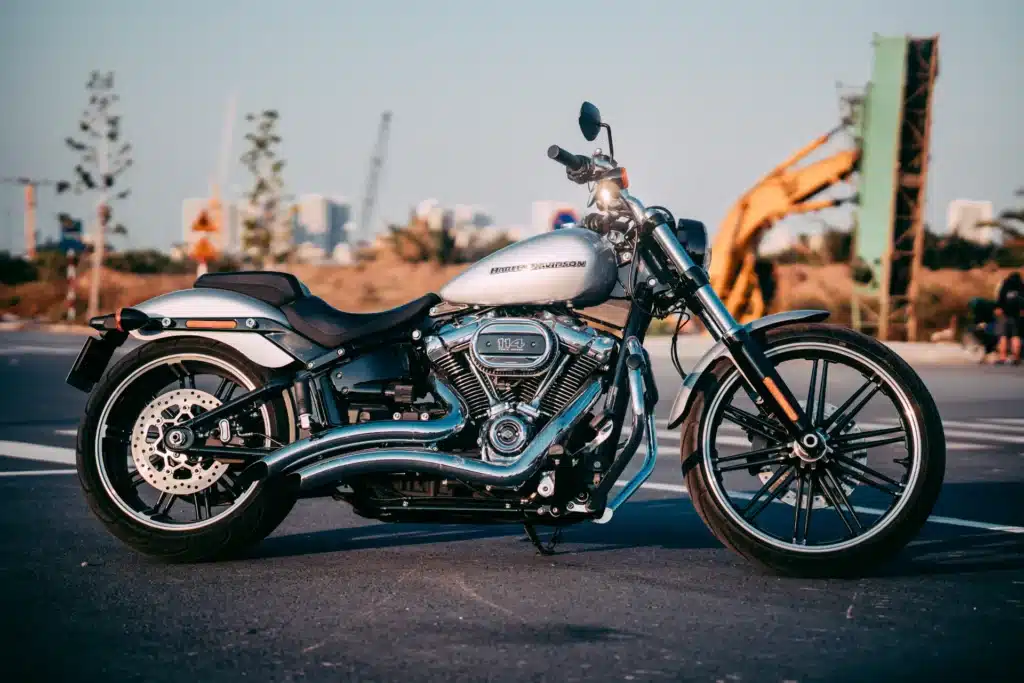It may be that you have been puttering along on your single piston motorcycle for a long time without a care in the world. Or you may the owner of a veritable monster that either roars or is entirely silent. Whatever the case, motorcycle engines can be thought of as being as old as engines themselves. After all, there is something about motorcycles that simplistic itself. Take two wheels and strap on an engine and you are good to go. It’s not that farfetched to get there from the horse drawn carts of yesteryear. This article looks at the anatomy of a motorcycle engine. It’s intended to help you understand both the complexity and simplicity of the monster that roars under you as you go down the road.
Steam Engines
The first engines of any kind ran on steam, and it’s not really that surprising that the first motorcycles were powered this way. In 1868, Frenchman Michaux Perreaux produced the first example of a motorcycle engine that was powered by steam. Steam engine bikes were actually produced for the general public in the 20th century.
Gasoline Engines
Despite the fact that steam engines had been around for a while, the first motorcycle is generally considered to be Gottlieb Daimler’s two wheeler. That’s because it was the first one that came with an internal combustion engine.
Electric engines
Motorcycles have, over the past few years, not been spared the raucous that has been taking place with regard to protecting the environment. This has given rise to electric and diesel engine motorcycles. A major advantage for electric motorcycles in particular is that they are really quite when compared to conventional bikes.
The anatomy of an internal combustion motorcycle engine
In spite of this varied history, the fact remains that the vast majority of the motorcycle engines that are out there run on gasoline and are internal combustion engines. Today, most motorcycles have either a two or a four stroke internal combustion engine.
The thing to note here is that motorcycle engines, in principle, run in about the same way as any other internal combustion engine. What this means is that they have a cylinder block, a head, pistons and a valve train.
How does it work?
So, how does a motorcycle engine work? Well, to put it simply, fuel (gasoline-air) explosions move the pistons up and down within the motorcycle engine’s cylinder block. The ignition is provided by spark plugs. The choreographic opening and closing of valves allow the fuel and air mixture to get into the combustion chamber.
The crankshaft
The up and down movement of the pistons is what turns the crankshaft. The energy that is produced this way is then transformed into motion for your bike. The motion is transmitted to the rear wheel of your bike through the transmission.
Classification
There are several ways through which motorcycle engines can be classified;
- Number of cylinders
Generally speaking, the more the number of cylinders that a motorcycle has, the quieter it is going to be. Motorcycles can have anything between one and six cylinders.
Single cylinder engines
Single cylinder motorcycle engines are quite popular, largely due to their fuel economy and because of the fact that they are simple to maintain and repair. The trade-off, however, is that they tend to be rather noisy. Along with the noise comes a lot of vibration, which actually requires balancers in order to counter them.
V-Twin Engines
The V-Twin configuration is one of the most popular configurations for motorcycles. Here, the cylinders that form the motorcycle’s engine are arranged in a v, thus allowing the motorcycle to have two cylinders.
The 4 cylinder motorcycle engine
The four cylinder motorcycle engine has become one of the most popular among enthusiasts over the past few years. A reason why that is the case is that this configuration is quieter than other setups. Arrangement of the 4 cylinders can either be in a row or can be in a V configuration.
- Combustion chamber capacity
As already mentioned, motorcycle engines can also be classified according to the capacity of their combustion chambers. The thing that you need to take note of is that the engine’s power capacity is directly related to the size of capacity of its combustion chamber.
The lowest capacity motorcycle engines come at around 50cc, which is about enough to get you around on your moped at a maximum speed of around 35 miles/hour. Lower capacity motorcycle engines are, nevertheless, quite popular, due to their fuel efficiency. It’s possible to get 100 miles per gallon on such a motorcycle.
High capacity engines
The highest capacity motorcycle engines come at around 1500 cc. These are monsters that are guaranteed to roar and turn heads while heading down the road.
Shipping your Motorcycle
Are you looking to ship your motorcycle to some part of the United States? At AA Motorcycle shipping, we have over 2 decade’s experience catering to the needs of people across the country when it comes to the safe and efficient transportation of bikes.
Whether your motorcycle is new or vintage, we offer up to $5000 dollars in insurance on all bikes. What’s more, this insurance can also be increased upon request. So what is it that makes us exceptions?
- We offer door to door deliveries
- All our shipments are guaranteed to arrive on time
- We put safety first, meaning your bike will get where you wish to have it delivered intact.
- You can get an instant, unbeatable and unchangeable quote on our website. With us, there are no hidden costs.
So, what are you waiting for? Get in touch with us today and we will give you a competitive quote on the shipment of motorcycle to any part of the United States.




